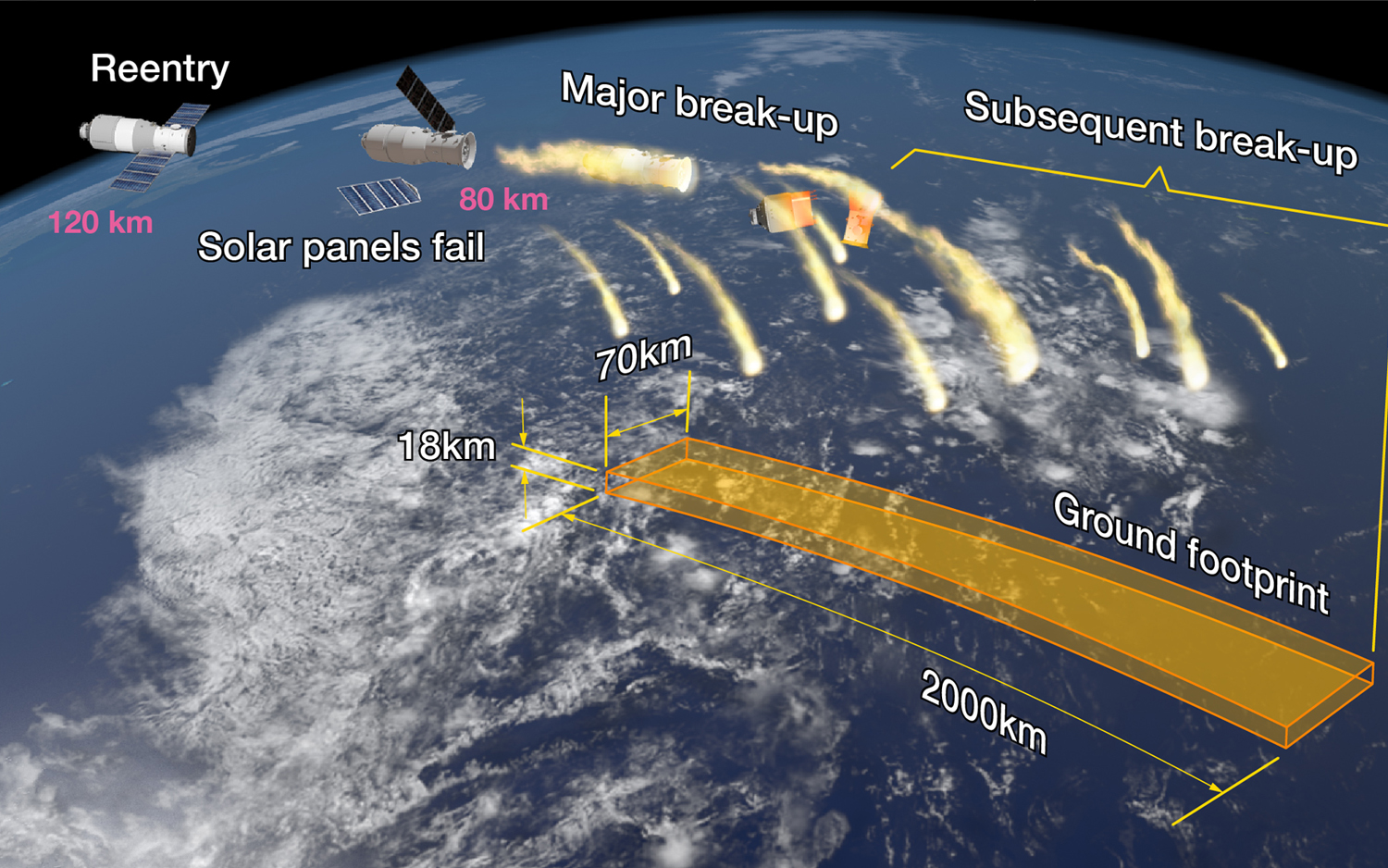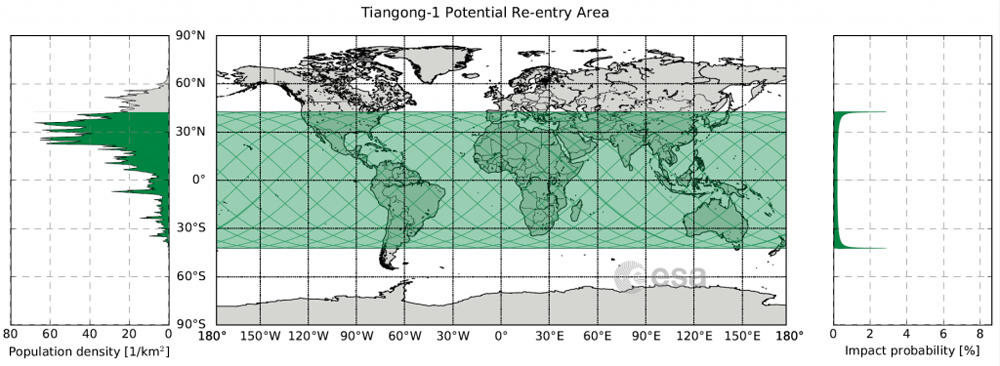Chinese Space Station Is Tumbling Toward an Easter Sunday Crash
Update for 6 p.m. EDT: Tiangong-1 is now forecast to re-enter Earth's atmosphere on April 1 at 12:15 p.m. EDT (1615 GMT), give or take 9 hours, according to the Aerospace Corp.
ARLINGTON, Va. – The falling Chinese space station Tiangong-1 is tumbling in orbit and may crash back to Earth early Easter Sunday (April 1), experts say.
Estimates for the crash of Tiangong-1 range sometime between March 31 and April 1, with a focus of 10 a.m. EDT (1400 GMT) on April 1, according to Aerospace Corp., which is tracking the space lab's fall. That April 1 target comes with an error of 16 hours, so the spacecraft could potentially begin its fiery death dive anytime between Saturday and Sunday afternoon. An analysis by the European Space Agency also supports that re-entry estimate. [China's Falling Tiangong-1: What You Need to Know]

But scientists and engineers still cannot pinpoint exactly where and when the 9.4-ton (8.5 metric tons) space station will fall. Partly that is because the school bus-size Tiangong-1 is tumbling as it falls, which makes it hard to predict how atmospheric drag will affect the spacecraft's re-entry time and path, Aerospace Corp. engineers said Wednesday (March 28).
"It is tumbling," Roger Thompson, a senior engineering specialist with Aerospace Corp., told reporters at the company's office here Wednesday. "We have been able to confirm that there is a tumble, we just can't tell the orientation."
Aerospace Corp. confirmed using U.S. Air Force radar data and telescope observations, Thompson said.

Tiangong-1 launched in September 2011 to test docking systems and other technology needed for an even larger, multi-module space station to be built in the 2020s. The station was visited by China's uncrewed Shenzhou-8 spacecraft in November 2011 and two crewed missions, one each in 2012 and 2013, respectively.
Get the Space.com Newsletter
Breaking space news, the latest updates on rocket launches, skywatching events and more!
In March 2016, Tiangong-1 stopped communicating with its mission control center in Beijing, leading the China Manned Space Engineering Office (CMSEO) to declare its mission over. Tiangong-1 has been space junk ever since.
Currently, Tiangong-1 is expected to fall to Earth somewhere between the latitudes of 42.7 degrees north and 42.7 degrees south, a range that spans the border of South Dakota and Nebraska in the north and Tasmania in the south.
As re-entry day nears for Tiangong-1, satellite trackers will be able to make more refined predictions for where and when it will crash. In a statement today (March 29), CMSEO officials said the public should not fear being hit by debris from Tiangong-1.
"There is no need for people to worry about its re-entry into the atmosphere. It won't crash to the Earth fiercely, as in sci-fi movie scenarios, but will look more like a shower of meteors," the statement said according to the state-run Xinhua news service.
You can still see the Tiangong-1 space station in the night sky, if you know when and where to look and have good weather.
In fact, the chances of being struck by debris from Tiangong-1 are less than 1 in a trillion, according to a fact sheet from Aerospace Corp.
If you are able to see the Tiangong-1 re-entry, you can report your sighting to Aerospace Corp.'s Center for Orbital and Reentry Debris Studies through the CORDS website here.
Email Tariq Malik at tmalik@space.com or follow him @tariqjmalik. Follow us @Spacedotcom, Facebook and Google+. Original article on Space.com.
Join our Space Forums to keep talking space on the latest missions, night sky and more! And if you have a news tip, correction or comment, let us know at: community@space.com.

Tariq is the Editor-in-Chief of Space.com and joined the team in 2001, first as an intern and staff writer, and later as an editor. He covers human spaceflight, exploration and space science, as well as skywatching and entertainment. He became Space.com's Managing Editor in 2009 and Editor-in-Chief in 2019. Before joining Space.com, Tariq was a staff reporter for The Los Angeles Times covering education and city beats in La Habra, Fullerton and Huntington Beach. In October 2022, Tariq received the Harry Kolcum Award for excellence in space reporting from the National Space Club Florida Committee. He is also an Eagle Scout (yes, he has the Space Exploration merit badge) and went to Space Camp four times as a kid and a fifth time as an adult. He has journalism degrees from the University of Southern California and New York University. You can find Tariq at Space.com and as the co-host to the This Week In Space podcast with space historian Rod Pyle on the TWiT network. To see his latest project, you can follow Tariq on Twitter @tariqjmalik.










